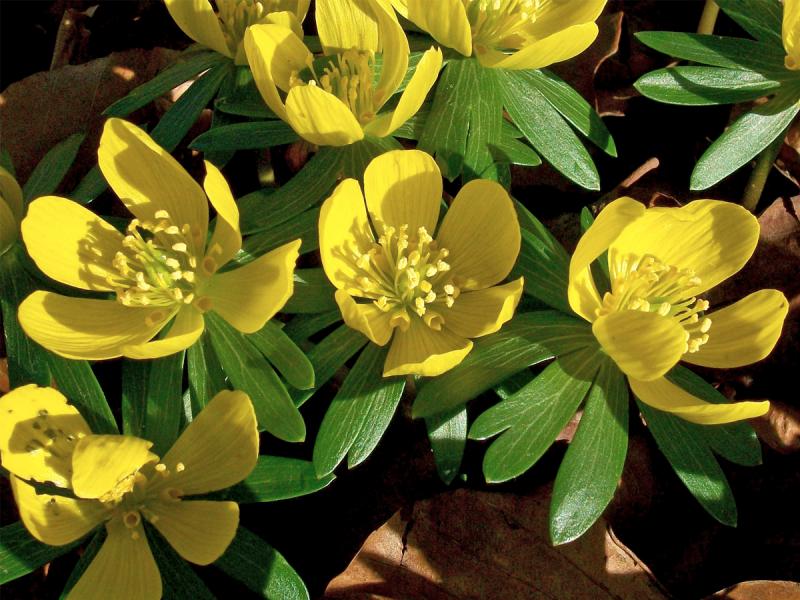Dr. George Henry Lamson was a British volunteer surgeon in Romania and Serbia, but like many war shocked, he turned to morphine, and his addiction made him desperate for money.
In 1881, he visited his 18-year-old brother-in-law Percy John, giving him a slice of Dundee cake. The brother-in-law died from poisoning, and Dr. Lamson stood to increase his share of the family inheritance. The cake was laced with aconitine from the root of the winter aconite (Eranthis hyemalis).
Besides use for poisoning in-laws, the winter aconite, in the buttercup family, is one of the very first flowers of spring, often poking through the snow even before crocus. Because of its first in bloom flowers, it attracts beneficial pollinators.
Winter aconites are very short, only three to six inches high and about as wide. The bright, cup-shaped yellow flowers have a green-fringed collar of flat leaves. They self-seed easily and can grow into large yellow mantles of blooms in early springtime. Winter aconite flowers have a delicate honey scent.
These are best planted under deciduous trees, scattered in lawns the way you plant crocus, or added to rock gardens and along paths and walkways. The tiny raisin-shaped bulbs are actually tubers. Tubers are simply fleshy roots that act just like a bulb and offer food and moisture for next year’s flowers.
Plant the tiny tubers late in the autumn when you plant daffodils or other spring-flowering bulbs. Because of their small size, you want to get the tubers through the winter by planting them a bit deep, 5 inches deep or more. They do well in all sorts of soil from clay to sandy loam as long as it drains well. Choose a spot in full sun to partial shade.
Winter aconites look best in mass plantings so don't be afraid to crowd them in as close as 4 inches apart in each direction. They make good companions to snowdrops (Galanthus nivalis) and crocus (Crocus vernus). Best of all winter aconites are resistant to deer and rabbits who perhaps sense the plant's hidden poisons.
Winter aconites will readily spread when planted in soil rich in humus, and can be planted either as tubers or seed. They are extremely hardy and do well in USDA Zones 4-7.
About the only care you will have in the years forward is to ignore it.
You can add a slow-release bulb food in early spring, but just letting the foliage die back naturally will give them all the nourishment they need.
So plant some winter aconites this fall, being sure to wash your hands or wear gloves, and next year you will have the very first flowers of spring. As for Dr. Lamson? He was tried in March 1882 and found guilty of murdering Percy John. Dr. Lamson was hanged in April 1882. Right about the time winter aconites bloom.




















































